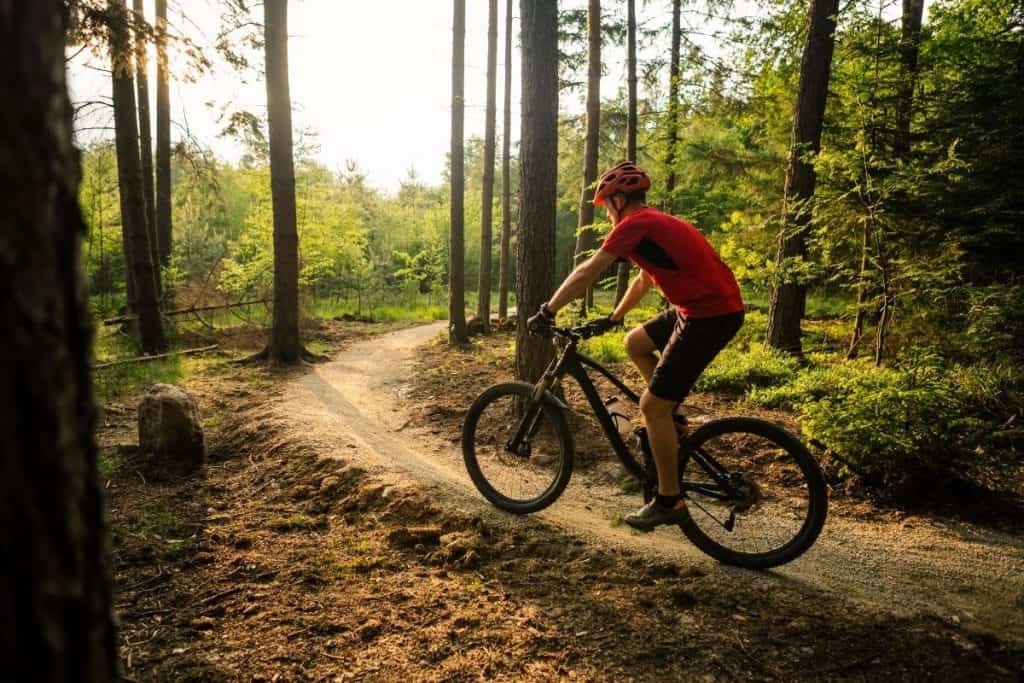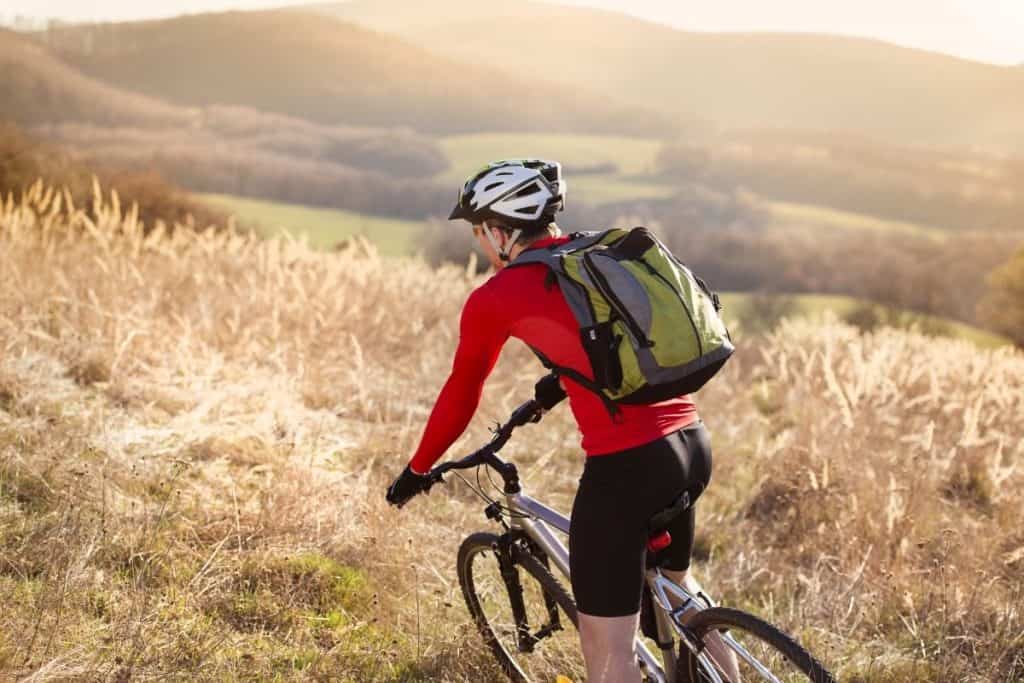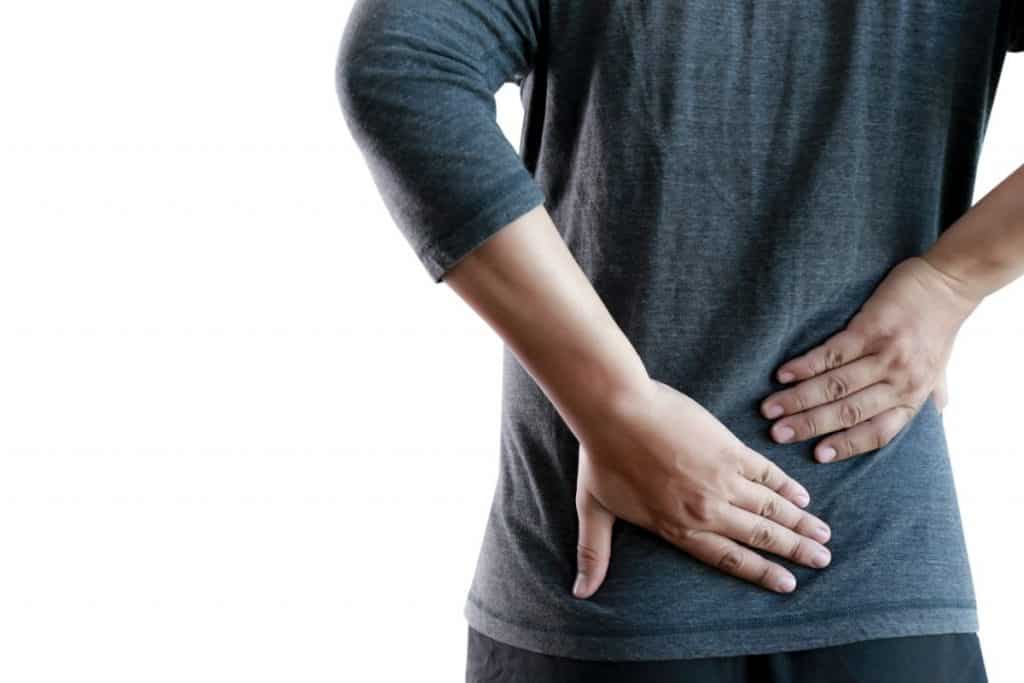
If you’re thinking about getting into mountain biking as a form of exercise or recently started, then you may wonder if mountain biking is bad for your back. Nothing – and I mean nothing is worse than back pain. So it’s a fair question to consider before getting too involved in it.
Mountain biking is not inherently bad for your back. However, poor positioning, tight hips, a weak core, an improperly configured bike, or a crash are all factors that could lead to back pain over time in mountain biking.
As you can see, mountain biking is no more likely to cause back pain than a wide variety of other common daily tasks. However, there are certain steps that you can take to ensure that it’s an enjoyable and pain-free form of exercise!
Back pain & mountain biking
Biking is a popular activity, and people have embraced it as a sport the world over. While a section of people uses it to minimize lower back pain, many others complain that it could cause their pain. But can that be true?
It’s fair to point out that Mountain biking is not without its challenges. From carrying gear to the potential of crashes, there are certainly scenarios that could lead to back pain.
However, it’s worth pointing out several important factors:
- A mountain bike’s upright position encourages and enables good posture more easily than being hunched over on a road bike.
- It requires a variety of body positions and movement during rides that alleviate overuse.
- It’s a non-contact sport. You have full control over what and where you ride, as well as any obstacles that you attempt.
- Water, tools, and almost all backup gear can be offloaded to the bike’s frame to reduce back strain.
Upright Position
Most notably, mountain biking offers the ability to have an extremely upright posture. Compared to that of road biking where riders find themselves slung low over the handlebars, it’s far easier on your body!
You can also tweak and modify the setup of your bike to further adjust for any discomfort or needs. This is where getting a fitting done at your local bike shop can pay for itself quickly. They can help assist you with getting every measurement dialed in exactly as it should be.
Body Movement
Also unlike road biking, mountain biking requires one to maneuver their body around the bike to successfully navigate many trails. This constant movement up and down, as well as around the bike ensures that you don’t spend too long in one position.
This is extremely helpful for keeping blood flowing all throughout the body, and reducing the likelihood of overuse injuries due to this variety of movement.
Non-Contact Sport
The point regarding “non-contact” sport may seem silly, but if you’re comparing mountain biking to most team sports e.g. basketball as a form of exercise, then it’s much less likely that you’ll be injured through accidental (or purposeful) contact.
Slamming into someone, or even landing strangely after a jump, is a quick way to find yourself tweaking something in your back. This is especially the case if you find yourself in the “weekend warrior” status that many of us do.
While their is still the potential of a crash, you virtually never HAVE to put yourself in that position if it’s a major concern. You can slowly try harder trails as your technique and skills improve, and never rush into anything.
Weight Distribution
Lastly, it shouldn’t be overlooked that you don’t need to carry everything yourself. While throwing on a camelbak for your water or a small backpack to hold snack or tools is certainly an option, it’s not a requirement!
Let that burly bike frame carry some of the load for you – literally!
Get a saddle bag to hold tools and snacks and water bottle mounts to take at least the majority of the weight off your back.
Seems a bit obvious now, huh? 😉
What are the risks of mountain biking?

Even for sporting purposes, mountain biking is not without risks. Besides the fun you will likely have on the cycling trail, you will want to know and protect yourself from the possible risks you will face.
And while most of these risks will cause minor or no injuries to the biker, others may cause career-ending injuries. Let’s look deeper!
Mountain biking, like the name suggests, involves cruising across valleys and cycling uphill. The chosen track may not be any friendly, especially if you are on a debut cycling trip.
Often, the cycling trail is bumpy, has sharp turns, and maybe filled with gravel. And during wet months, your bike will skid several, and you will have to collect yourself from the ground.
Therefore, the terrain coupled with wet weather may constitute a recipe for falls. The list of injuries arising from falls ranges from mere scratches, broken limbs, and head injuries, to mention but a few. As you may already be imagining, you cannot prevent some of these by wearing a helmet or other protective gear.
Spinal injury sits high on the list of risks associated with mountain biking, and the number of people complaining about the spinal problem associated with biking rises by the day. Falling on steep slopes is a major cause of such injuries, but there are still other possible causes.
For instance, you will carry a backpack filled with essential utilities on a long biking trail. Such gear may have over 10 kilograms, given that you need water, bike spares, and tools, among other things.
Poor positioning of the pack on your back may hurt your lower back leading to intermittent pain.
Away from spine issues, you must know that a mountain biking train comprises steep slopes and sharp or blind corners at the hill’s foot. Now, riding downhill at speed may seem enjoyable, but the risk of colliding with other riders and stationery objects makes it worthless.
Still, people negotiate the sharp bends at high-speed and often fall to the ground and sustain injuries.
For what reason does my lower back hurt when I mountain bicycle?
Many bikers experience lower back pains after or during a mountain biking session. To understand why your back is aching, you will need to evaluate the following points.
First, do you have the right bike fit?
To reduce back pain, you need to ride a bike that fits well with your height. For instance, a bicycle with the saddles too high or a seat too low may cause your backside to lean from one side to the other as you pedal through the trail.
Additionally, if the handlebars are too wide or too low for your arms, this will make you strain unnecessarily and may eventually cause back pains.
Secondly, your riding posture has an impact on how comfortable you feel after the ride. It would help if you always remembered to straighten your back rather than bend it outwards the way most riders do.
In turn, the bones on your spine and lower back will remain aligned in the right positions and therefore experience minimum stress. This, coupled with inflexible hips, leads to unnecessary lateral movements that may hurt the lower back.
The third cause of lower back pain revolves around body mechanics. For instance, people who have not been exercising for an extended period are more likely to experience lower back pain after mountain biking than regular exercise and cycle. Therefore, you should plan and start practicing long before going on that maiden mountain biking trail.
Finally, on the list of causes of lower back pain comes weak core muscles.
Mountain biking utilizes the hands, legs, and hips more than the lower back and the abdomen. While the arms and the rib cage supports the upper back and the pedals support the hips, the lower back is often supported by weak abdominal muscles.
This can become the origination of a problem, especially if you carry a heavy backpack while biking.
How do you fix lower back pain?

Improve your bicycle game
The first step you should take to fix lower back pain associated with mountain biking is to choose a bike that goes well with your body size. We mentioned that a shallow bike seat or high pedals are recipes for pain and should be avoided at all costs.
Additionally, selecting a bike with handlebars of medium width can go a long way in reducing your pain.
Minimize the luggage on your back
You will almost always need to carry a backpack. However, some modern solutions can help you reduce what you pack to carry on your back.
For example, attaching one or two bottle cages on the bicycle frame will cut at least 1Kg from the backpack.
Further, buying clothes designed with pouches to carry spares and tools can cut out significant weight from the bag, making it light for the lower back.
Exercise before taking the bike on the road
You were probably going on mountain biking two years ago. That does not make you fit to wake up and jump on the trail because your friend invited you.
Instead, you make the necessary preparations and ride for about a week in the neighborhood. Additionally, checking out the course before the actual biking day can also help you identify the amount of stress the exercise may put on your muscles and plan.
Improve your pedaling technique
We have mentioned that poor pedaling skills can cause pain in your lower back. Therefore, you need to relook your cycling skills and practices cutting out the problem.
You may need to change your posture and how you engage the handlebars, among other things. And if the biking trail is long or you have a heavy backpack, pedaling while standing after some distance can aid the back pain.
Build your core muscles
The core muscles of the abdomen support your lower back when you ride up or downhill. They help keep the lower back in a natural position and thus eliminate pain resulting from a wrong riding posture.
You may need to seek a trained sports physio or a trained PT to show you how to build the core muscles best.
Reach out to a biking trainer
If you have been biking for a while and the pain is persistent, perhaps due to your biking practices, it is time you sought the services of a biking trainer. A professional trainer can observe your maneuvers on the trail and diagnose what ails your back.
Even with the professional services, you will still need to avoid bad practices like carrying too much load on your back and bending your back when pedaling.
Mistakes that make you susceptible to lower back pains
- Gripping the handlebars too tightly: You certainly need to grip on the handlebars for support and control your bike, but excess grip makes your hands inflexible, adding to the pain recipe. A tight grip encourages you to bend your body outwards, and we have indicated that it is a catalyst for lower back pain.
- Keeping a collapsed chest: A significant percentage of bikers have a collapsed chest. The problem is similar to that experienced by day office workers; you can overcome it by practicing keeping the shoulders pulled back and low whenever you are not on the bike. Hunching shoulders can add to the lower back pain you are experiencing.
- Riding through the course while seated: It is advisable to pedal while standing while climbing uphill if you have a bag on your back. Standing shifts the weight of the bag and minimizes the pain. Depending on the steepness of the hill this may not always be an option, but it’s worth considering!
If you found this article helpful, then you may also want to consider taking a look at some of my other articles addressing additional mountain biking health questions.
